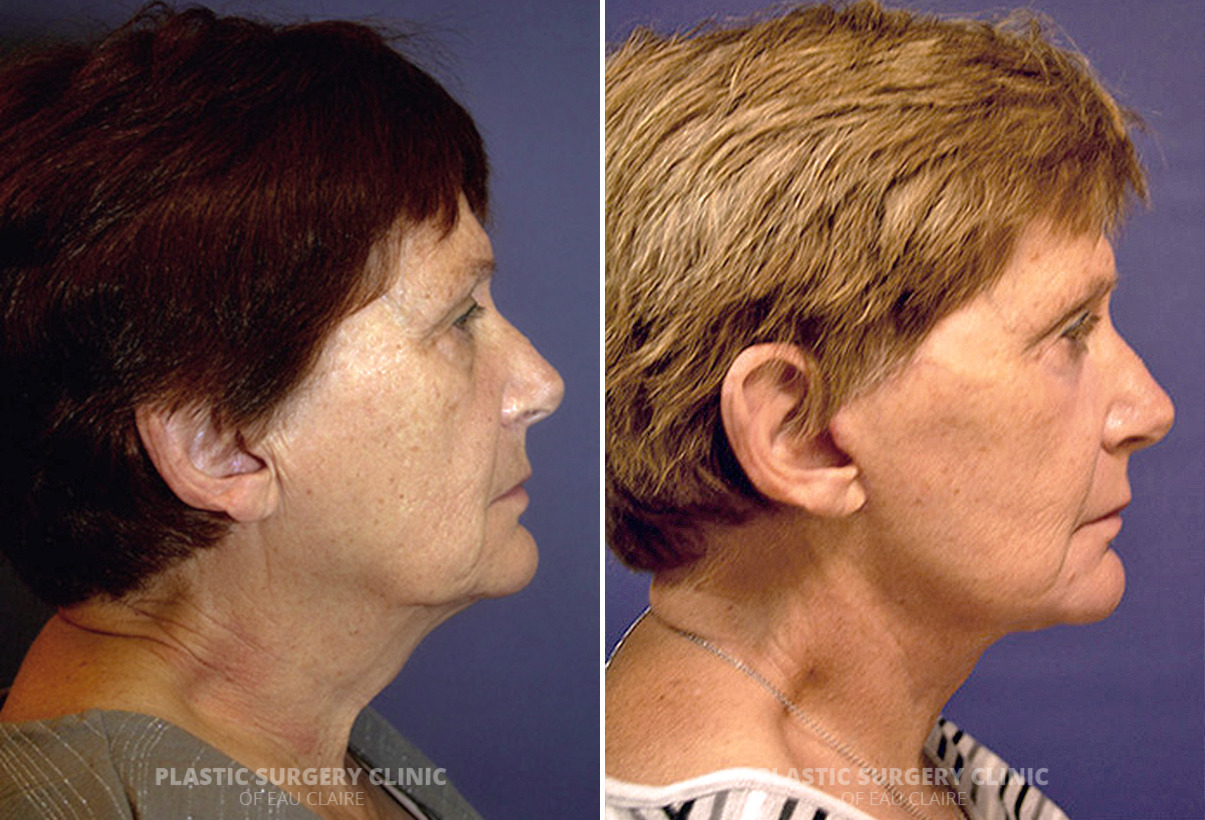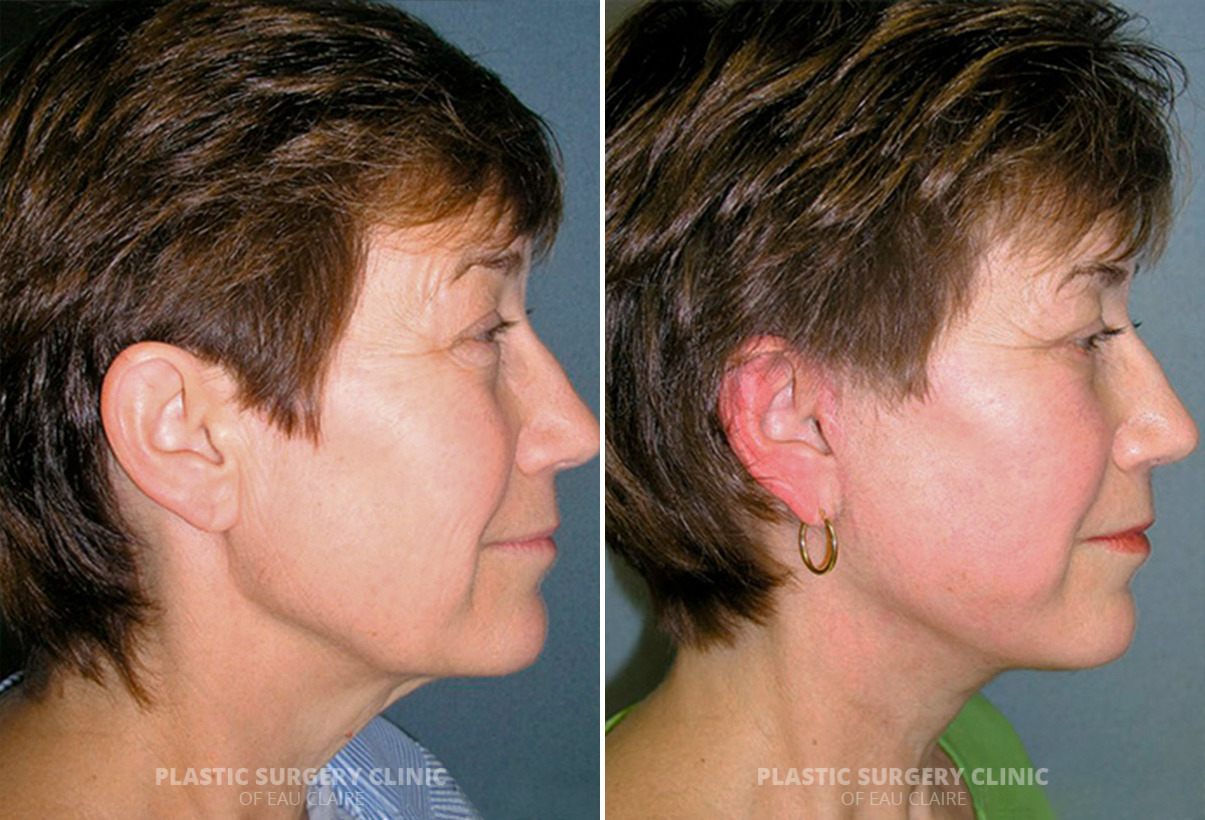Thinking about a facelift but wondering how long the recovery really takes? You’re not alone. Whether you’re planning for time off work or just want to know what the process looks like, understanding the facelift recovery timeline can help ease uncertainty and set realistic expectations.
Any type of facelift procedure (or “rhytidectomy”) can deliver transformative results, but it’s also a surgical procedure that requires proper healing. The good news is that most patients are surprised by how manageable the recovery process is with the right care and guidance. Read on to learn what to expect in the days, weeks, and months following your facelift.

How Long Does It Take to Recover From a Facelift?
Most patients can expect the majority of swelling and bruising to resolve within 2–4 weeks, with full results visible by 3 to 6 months. While initial downtime is typically about two weeks, minor improvements and refinements continue for several months. Healing time can vary depending on your age, health, and how closely you follow your surgeon’s aftercare instructions. Let’s break down the timeline further.
Facelift Surgery Recovery Time Day by Day
Recovering from a facelift is a gradual process, and knowing what to expect each step of the way can make the experience more manageable and less stressful. While every patient heals at their own pace, most follow a fairly predictable timeline when it comes to swelling, bruising, energy levels, and return to normal activities. Below is a general breakdown of the recovery phases to help you prepare, plan, and feel confident as you heal.
Day 1 after surgery
On the first day after your facelift, expect to feel groggy and tired, especially if you received general anesthesia. You’ll likely wake up with bandages wrapped around your head to minimize swelling and bruising, and small surgical drains may be in place to prevent fluid buildup. Pain and discomfort are most noticeable during this initial stage, so pain medications will be prescribed to help manage it. It’s crucial to have a caregiver with you for at least the first 24 hours, as you’ll need assistance moving around and monitoring for any immediate post-op concerns.
The First 24 Hours
Days 2–6
Swelling and bruising will likely peak around days 3 to 4, so don’t be alarmed if your appearance looks more intense before it starts to improve. Most patients begin to taper off prescription pain medication by day 4 as discomfort becomes more manageable. Your first follow-up visit typically occurs during this window, where your surgeon may remove any drains and change dressings. Light activity, like short walks or moving around the house, is encouraged to promote circulation—but continue avoiding anything strenuous. Sleeping with your head elevated will help reduce swelling and aid in a smoother recovery.
Early Recovery
Days 7–14
During the second week of recovery, swelling and bruising begin to subside noticeably, though some puffiness or discoloration may still linger. Patients often start to feel more like themselves and are usually cleared to return to light, non-strenuous work or daily activities. It’s common to experience sensations like tightness, numbness, or tingling in the face—these are temporary and part of the healing process. By the end of this period, many patients feel comfortable enough to go out in public with light makeup or strategic hairstyling to conceal any remaining signs of surgery.
Swelling Begins to Subside
Days 15–29
As you move into weeks three and four, you’ll likely notice significant improvements in how you look and feel. Any remaining swelling should continue to diminish, and your facial contours will begin to appear more defined. Sutures—if not already removed—are typically taken out during this stage, allowing incision sites to smooth out and heal more naturally. While some tightness or residual numbness may persist, most people feel comfortable resuming many normal activities, though you should still avoid intense exercise or anything that could put pressure on your face.
Significant Improvements
Day 30
By the one-month mark, most people are back to their normal routines and feeling significantly more confident in their appearance. Swelling and tightness continue to fade, and the incisions—while still maturing—are much less noticeable. Any lingering numbness or stiffness may persist but will likely be subtle and only noticeable to you. At this stage, it’s usually difficult for others to tell you’ve had surgery, and many patients begin enjoying the refreshed look a facelift provides. Continue protecting your skin with sunscreen and follow any remaining care instructions from your surgeon.
Back to Normal Routine
Weeks 4–12
Between weeks 4 and 12, most patients feel almost fully recovered, though subtle improvements will still be occurring beneath the surface. Swelling should be minimal, and any lingering tightness or numbness will continue to fade. You may begin easing back into more vigorous physical activity with your surgeon’s approval. During this period, the incisions will start to soften and become less visible, though full scar maturation can take several more months. At this stage, your refreshed facial contours will become more defined, and the natural-looking results of your facelift will be more noticeable.
Finishing Recovery
Months 6–12
By six months post-op, most of the healing process is complete, and the full results of your facelift are becoming clear. Any residual tightness, swelling, or numbness is typically very minimal and often only noticeable to you. Scars will continue to fade and flatten, and your facial contours will appear more natural and refined. Between months six and twelve, your results will continue to settle, and you’ll be able to fully enjoy your rejuvenated appearance. With proper skincare and sun protection, your facelift can provide a refreshed look that lasts for many years.
The Final Results
Are You Ready For A Consultation?
Join our satisfied clients who’ve experienced safe, effective treatments
Facelift Recovery Tips
Maximizing your facelift results and ensuring a smooth recovery depends largely on how well you care for yourself in the days and weeks after surgery. Following your surgeon’s instructions is key, but there are also a number of helpful practices you can adopt to support healing, reduce discomfort, and speed up recovery time.
- Follow all post-op care instructions: Always adhere to the recovery guidelines provided by your surgeon, including incision care and medication schedules. Attend all follow-up appointments to ensure your healing is progressing normally.
- Keep your head elevated: Sleeping with your head propped up on pillows for the first two weeks can significantly reduce swelling and promote fluid drainage.
- Avoid strenuous activities: Take time to rest and heal. Avoid exercise, heavy lifting, and any activity that increases your heart rate or blood pressure until your surgeon gives you the all-clear.
- Use cold compresses and prescribed creams: Cold compresses can help control swelling in the first few days. Once cleared by your surgeon, topical creams like Arnica or anti-bruising ointments may be beneficial.
- Protect your skin from the sun: Sun exposure can worsen scarring and slow healing. Always apply sunscreen and wear a hat if you’re spending time outdoors.
- Stay hydrated and eat light, nutritious meals: Drinking plenty of water and eating foods that are easy to chew and full of nutrients will give your body the fuel it needs to repair.
- Be patient with the process: Healing takes time. Don’t rush your return to work or social activities—give your body the rest it deserves and focus on gradual, steady progress.
Primary Rhinoplasty Before and After Photos


* Each patient is unique and individual results may vary.
Schedule a Consultation with a Facelift Surgeon
The key to a smooth and successful recovery begins with choosing a qualified and experienced plastic surgeon. An expert understands how to tailor your procedure and post-op care to your unique needs, which can greatly influence how quickly and comfortably you heal.
Dr. Ember Ewings at Plastic Surgery Clinic of Eau Claire has extensive experience in facial rejuvenation, including advanced facelift techniques. Her training in both the U.S. and Europe, combined with her board certification by the American Board of Plastic Surgery, ensures that you’ll receive expert care at every stage of your transformation. Call us at 715-833-2116 or visit our contact page to schedule your consultation today.


